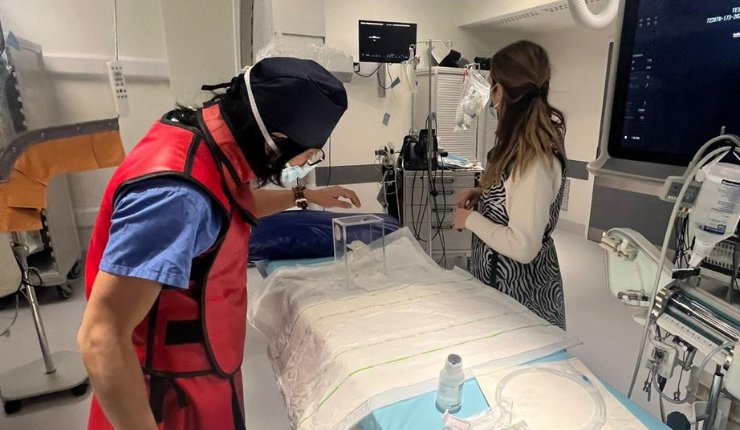
At a desktop 3D printer, a 15-year-old loads a design from software to hardware, presses print, and turns in for the night. From nothing but digital data and a material feedstock, he will have a new Star Wars figurine ready to add to his collection by morning.
The capabilities of this technology aren’t lost on his cardiologist grandfather either. Dr. Patrick W Serruys, who manages the Corrib Core Lab, has been practicing since the 1970s but he too has embraced the capacity to materialise plastic models from digital input in a matter of hours.
Working with MedScan3D, a specialist in converting medical scans into STL files for the 3D printing of medical models, and Capbuster, the makers of a balloon catheter and guidewire combination device, Serruys has developed an aortic root chronic total occlusion (CTO) model with patient-specific coronary arteries. The model, printed as a single multi-material part, is designed to help surgeons prospectively and retroactively gain understandings on how to best approach the aortic CTO procedure.
“You’re not going to go into the patient without knowing what you’re going to do,” Serruys told TCT. “You’re going to put all the odds on your side and have training, planning, and simulation before [operating].”
The model was developed using patient data from a CT scan, with the data being sent to MedScan3D for segmentation using its FDA-approved DICOM to Print software. This yields a rough digital model which is made suitable for 3D printing after post-processing in Autodesk Meshmixer and parametric design, in which a tank and conformal holder were engineered, with Siemens SolidEdge. Leaning on the Stratasys J826 Prime multi-material PolyJet 3D printer, MedScan3D then printed the model before distributing it to the Corrib Core Lab.
Before the model was printed, conversations between MedScan3D, Corrib Core Lab and Capbuster were had to determine which materials were most suitable to mimic which areas of the aortic valve model. Using their experience and the Hounsfield Unit to measure radio density, the partners selected a rigid polymer material for the sections of the model which represented calcified areas of the aorta valve, and softer elastomers for sections such as the vessel wall. With attention to detail of the utmost importance, the partners also took advantage of the CT scan data to ensure the arteries mimicked were specific to the patient.
With this model, the surgeon would then use the semi-transparent model to simulate actions made in the surgery.
“What we will do,” Serruys explained, “is cannulate the ostium of the coronary artery with the guiding catheter. The second step is going to advance the small catheter which has a small balloon and when we get in contact with the cap, we will inflate the balloon [and] we will see if the balloon is nicely anchored. If it is nicely anchored, the next point will be to advance the rigid wire, which is anchored in an helicoidal system and you rotate a quarter of a millimeter, advancing very slowly. There is no problem of flow because it’s totally occluded so the patient doesn’t feel anything. All these steps will be repeated and at each step you can learn ‘don’t do this, but do that.’”
To develop the aortic root CTO model, it required a two-hour segmentation process and a two-hour printing process. Timings that would be palatable for most surgeons preparing for most surgeries, with the overnight additive production of models identified as an opportunity by Serruys.
Before the guidewire and balloon combination was introduced in the 1980s, the only therapeutic intervention for a total occlusion was bypass surgery. Now, the treatment of CTO might be about to take another step forward with 3D printing.
“Through close collaboration with healthcare professionals, engineers, and patients, we can create innovative solutions that address unmet medical needs and enhance people’s lives,” said MedScan3D Technical Director Jacqui O’Connor. “We are enthusiastic about the possibilities that lie ahead.”




